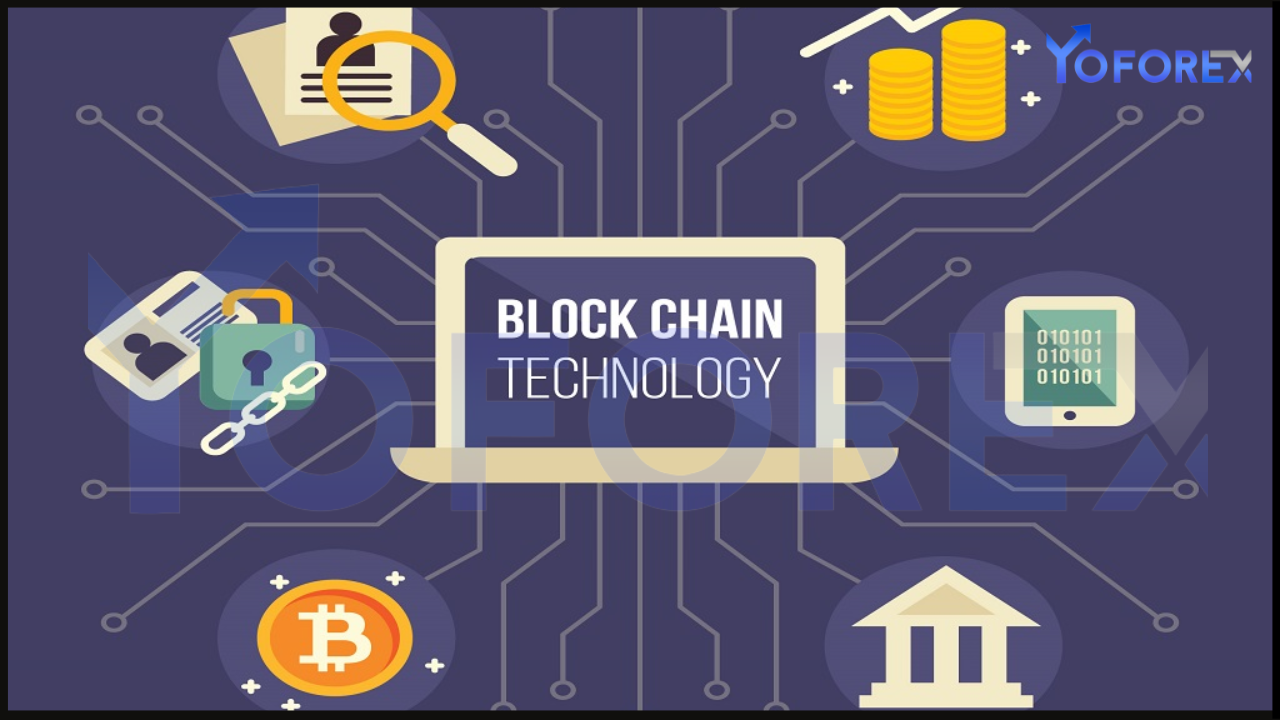The foreign exchange (forex) market is the world’s largest and most liquid financial market, with a daily trading volume exceeding $7 trillion. Despite its enormous scale, forex trading has long been fraught with inefficiencies, including high fees, lack of transparency, and slow transaction times. Enter blockchain technology—a revolutionary system poised to transform the forex trading landscape. By enhancing security, transparency, and efficiency, blockchain is reshaping how currency transactions are conducted globally.
In this blog, we’ll explore the profound impact of blockchain on forex trading, its advantages, challenges, and the future it holds for traders and brokers alike.

What is Blockchain Technology?
At its core, blockchain is a decentralized digital ledger that records transactions across multiple computers securely and transparently. Each transaction is grouped into a block, and once verified, it is added to a chain of previous blocks, forming an immutable record.
Key features of blockchain technology include:
- Decentralization: Unlike traditional systems, blockchain operates without a central authority.
- Transparency: All participants have access to the ledger, fostering trust.
- Immutability: Data recorded on the blockchain cannot be altered.
- Security: Advanced cryptographic methods ensure data integrity.
These features make blockchain particularly appealing for financial systems like forex, where trust and efficiency are paramount.
How Blockchain is Revolutionizing Forex Trading
1. Eliminating Intermediaries
Traditional forex trading involves intermediaries like banks, brokers, and clearinghouses, each charging fees for their services. Blockchain eliminates these intermediaries by enabling peer-to-peer transactions. This not only reduces costs but also speeds up the trading process.
For example, with blockchain-powered platforms, a trader in Japan can directly exchange yen for euros with a counterpart in Germany without relying on a bank.
2. Enhanced Transparency
One of the biggest criticisms of the forex market is its lack of transparency. Blockchain addresses this by providing a transparent ledger where all transactions are recorded and accessible to all participants. Traders can verify rates, fees, and transaction histories, minimizing the risk of manipulation or fraud.
3. Reduced Costs
The traditional forex ecosystem is riddled with fees—from transaction charges to currency conversion fees. Blockchain’s decentralized nature removes the need for many of these costs. Additionally, smart contracts, self-executing contracts on the blockchain, automate processes like settlement and reconciliation, further reducing expenses.
4. Faster Transactions
Forex trading often involves cross-border transactions, which can take days to settle due to banking hours and regulatory requirements. Blockchain enables near-instantaneous settlements, even for international trades, ensuring traders can capitalize on market opportunities without delays.
5. Enhanced Security
Cybersecurity is a critical concern in forex trading. Blockchain’s cryptographic algorithms ensure that transactions are secure and tamper-proof. Furthermore, its decentralized nature makes it resistant to hacks, as there is no single point of failure.
Real-World Applications of Blockchain in Forex Trading
Decentralized Forex Exchanges
Decentralized exchanges (DEXs) leverage blockchain technology to enable direct trading between participants without intermediaries. Unlike traditional forex platforms, DEXs operate on smart contracts, ensuring fairness and transparency.
Tokenized Currencies
Blockchain allows for the creation of digital tokens representing fiat currencies, such as USDT (Tether) for USD. These tokenized currencies enable seamless forex trading by eliminating the need for traditional banking channels.
Cross-Border Payments
Startups like Ripple are already using blockchain to revolutionize cross-border payments. Ripple’s XRP token facilitates instant and cost-effective transactions between currencies, addressing inefficiencies in the traditional system.
Advantages of Blockchain in Forex Trading
- Accessibility: Blockchain democratizes forex trading by allowing anyone with internet access to participate.
- Lower Entry Barriers: Reduced fees and decentralized platforms make trading more affordable for retail investors.
- Transparency and Trust: Immutable records and open ledgers enhance trust among participants.
- Improved Liquidity: Faster settlements lead to better market liquidity, benefiting all traders.
- Reduced Counterparty Risks: With smart contracts, obligations are automatically executed, minimizing risks.
Challenges in Adopting Blockchain for Forex Trading
Despite its potential, blockchain adoption in forex trading faces several hurdles:
- Regulatory Uncertainty
Forex markets operate within complex regulatory frameworks, and blockchain’s decentralized nature poses challenges for compliance. Governments and regulatory bodies are still grappling with how to integrate blockchain into existing systems. - Scalability Issues
Blockchain networks can face scalability challenges during high transaction volumes, leading to delays and increased fees. Solutions like layer-2 scaling and advanced consensus algorithms are being developed to address this. - Technological Barriers
Integrating blockchain with existing forex infrastructure requires significant investment and technical expertise, which may deter smaller brokers. - Resistance to Change
Established players in the forex market may resist blockchain adoption due to fear of disruption and loss of control.
The Future of Blockchain in Forex Trading
As blockchain technology continues to evolve, its integration with forex trading will likely deepen. Here are some potential developments:
- AI-Driven Blockchain Platforms
Combining blockchain with artificial intelligence (AI) could result in smarter trading platforms that analyze market trends and execute trades automatically. - Global Regulatory Frameworks
Harmonized global regulations could pave the way for widespread blockchain adoption in forex trading, fostering trust and stability. - Integration with Central Bank Digital Currencies (CBDCs)
Many central banks are exploring CBDCs, which are digital versions of national currencies. These could be seamlessly integrated into blockchain-powered forex systems. - Increased Use of Decentralized Finance (DeFi)
DeFi platforms are gaining traction in the financial world, and their integration with forex trading could further disrupt traditional systems.
Conclusion
Blockchain technology is a game-changer for forex trading. By eliminating intermediaries, enhancing transparency, and reducing costs, it addresses many inefficiencies plaguing the traditional system. While challenges like regulatory uncertainty and scalability issues remain, the benefits far outweigh the drawbacks.
As technology matures and adoption grows, blockchain could become the backbone of the forex trading ecosystem, creating a fairer, more efficient, and inclusive market for traders worldwide. For those in the forex space, now is the time to embrace blockchain and prepare for the transformative changes it will bring.

